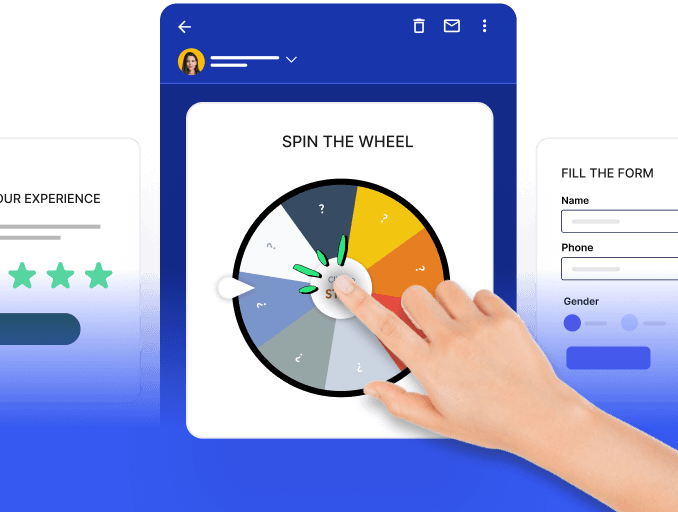Due to the growing popularity of online shopping, there has been a significant growth in the number of ecommerce brands. However, creating a successful ecommerce business requires more than just opening an online store and selling products. To grow in the highly competitive ecommerce industry, businesses must make data-driven decisions based on accurate and relevant information.
This is where ecommerce analytics comes into play. It provides important insights into customer behavior, sales success, and overall business growth. ecommerce organizations can apply this to make more informed decisions that drive sales, improve customer satisfaction, and increase profits.
In this blog, we'll look at the value of ecommerce analytics, how it can help businesses grow, and how you can set up your ecommerce store to grow and beat the competition.
Table of contents
What is ecommerce analytics?
Ecommerce analytics is the process of gathering data from various sources, such as your online store and marketing campaigns, and analyzing it to gain actionable insights for your business. This data-driven approach allows you to make informed decisions that can drive sales, improve customer satisfaction, and optimize your overall business performance.
Every interaction and transaction, from the number of visitors to your online store to the items they purchase, provides useful data that can be utilized for measuring sales performance, understanding customer behavior, and pinpointing areas for development.
This data contains information from your online store, like website traffic, product views, add-to-cart behavior, and completed sales. Tracking and analyzing this data allows you to learn about client preferences, identify popular products, and adjust your website to improve the experience for customers.
This analysis provides actionable insights. By analyzing patterns, trends, and customer behavior, you can identify growth opportunities, optimize your marketing efforts, and improve your overall business performance.
How can analytics help grow businesses?
It is important for business growth since it provides important data that can be used to make important choices. Here’s how it benefits your business.
1. Helps make informed decisions
With the help of analytics, businesses can make data-driven decisions rather than relying on guesswork. By analyzing customer data, sales data, sales funnel, marketing analytics, and other metrics, businesses can gain insights into customer behavior, preferences, and trends. This allows them to tailor their marketing efforts, optimize their product offerings, and make informed decisions that are more likely to resonate with their target audience.
2. Improved customer retention
It can help businesses improve customer retention by identifying patterns, trends, and behaviors that lead to customer churn. By analyzing customer data, businesses can identify the factors that contribute to customer loyalty and satisfaction. This allows them to develop targeted retention strategies, such as personalized marketing campaigns and loyalty programs, to help retain existing customers and increase customer lifetime value.
3. Better opportunities
It can provide valuable insights into sales data, such as revenue trends, best-selling products, and customer purchasing patterns. By analyzing this data, businesses can identify opportunities to upsell and cross-sell products, optimize pricing strategies, and identify gaps in their product offerings. This can help drive sales and increase revenue.
4. Aligned business goals and strategies
Ecommerce analytics can help businesses align their strategies and tactics with their overall business goals. By setting key performance indicators (KPIs) and regularly monitoring and analyzing relevant metrics, businesses can ensure that their efforts are focused on achieving their desired outcomes. This allows for better resource allocation and prioritization of initiatives.
Types of ecommerce analytics and key areas
Ecommerce analytics covers a wide range of key areas that are essential for driving growth in online businesses. By focusing on these key areas businesses can gain valuable insights and make data-driven decisions to drive growth and optimize their online businesses. Here are some of the key types and their importance:
1. Customer acquisition analytics
It involves analyzing the cost of acquiring new customers, evaluating the effectiveness of marketing campaigns, and assessing the impact of social media efforts on customer acquisition.
One of the key metrics in customer acquisition analytics is Customer Acquisition Cost (CAC), which measures the average cost of acquiring a new customer. By tracking CAC, businesses can assess the efficiency of their marketing campaigns and identify opportunities to optimize marketing spend.
It also involves analyzing the performance of different marketing campaigns, such as email marketing campaigns, paid advertising, and social media promotions. By analyzing social media data, businesses can gain insights into the effectiveness of their social media efforts in driving customer acquisition. This includes tracking metrics like engagements, reach, and conversions from social media platforms.
2. Growth analytics
It focuses on analyzing sales performance, average order value, and growth rate to identify opportunities for revenue growth and optimize pricing and product strategies.
Sales performance analytics involves tracking key sales metrics such as total sales, revenue per customer, and sales by product category. By analyzing these metrics, businesses can identify trends and patterns in sales performance and make data-driven decisions to optimize their product offerings and pricing strategies.
Growth rate analytics involves tracking the rate at which a business is growing over a specific time. By analyzing growth rate trends, businesses can assess the effectiveness of their growth strategies and make data-driven decisions to drive further growth.
3. Behavioral analytics
It focuses on analyzing customer behavior, shopping cart interactions, and the checkout process to optimize the customer journey and improve conversion rates.
One key aspect of behavioral analytics is analyzing customer behavior on the website. This includes tracking metrics such as page views, time spent on site, and bounce rates. By analyzing these metrics, businesses can gain insights into how customers interact with the website and identify opportunities to improve the user experience. For these business owners to survive and thrive, they need to be able to make better decisions faster. This is where web analytics comes into play.
Shopping cart analytics is another important component of behavioral analytics. By tracking metrics such as cart abandonment rates, add-to-cart behavior, and checkout completion rates, businesses can identify barriers to conversion and optimize the shopping cart and checkout process to improve conversion rates.
4. Audience analytics
It analyzes customer segments, website traffic, and user experience to better understand customer preferences and tailor marketing campaigns.
One key aspect of audience analytics is analyzing customer segments. By segmenting customers based on demographics, behavior, or other criteria, businesses can gain insights into the preferences and needs of different customer groups. This allows for more targeted marketing campaigns and personalized messaging.
Website traffic analytics is another important component of audience analytics. By tracking metrics such as unique visitors, page views, and traffic sources, businesses can gain insights into how customers are finding and interacting with their websites. This can help identify opportunities for optimization and improve the user experience.
User experience analytics involves analyzing metrics such as bounce rates, time spent on site, and navigation patterns to assess the effectiveness of the website design and user interface. By optimizing the user experience, businesses can improve engagement, increase conversion rates, and drive customer satisfaction.
5. Conversion rate analytics
Conversion rate analytics focuses on analyzing the conversion rate, conducting A/B testing, and optimizing the checkout process to improve conversion rates and drive revenue growth.
The conversion rate is a key metric and measures the percentage of website visitors who complete a desired action, such as making a purchase or filling out a form. By analyzing the conversion rate, businesses can identify areas of improvement and test different strategies to increase conversions.
6. Inventory management analytics
Inventory management analytics focuses on analyzing inventory levels, sales forecasting, and stock management to optimize inventory management and ensure the availability of products.
Sales forecasting is an important component of inventory management analytics. By analyzing historical sales data and market trends, businesses can forecast demand and plan their inventory accordingly. This helps optimize stock levels, reduce excess inventory, and avoid stockouts.
Stock management analytics involves analyzing metrics such as lead time, order fulfillment rates, and supplier performance to ensure efficient stock management. By optimizing stock management processes, businesses can reduce costs, improve order fulfillment, and enhance customer satisfaction.
How to set up ecommerce analytics
Setting up ecommerce analytics involves several steps to ensure effective data collection and analysis. Here are the key steps to set up:
Step 1: Identify your purpose
Before setting up ecommerce analytics, it is important to identify your purpose and clarify your business objectives and strategic goals. This will help determine what data you need to collect and analyze to measure and drive growth and achieve your desired outcomes.
Your goals could include increasing sales, improving customer retention, acquiring customers, and so on. You must also make sure that these objectives are in line with the overall business goals of your company. Your objectives must be specific and measurable. For example, increasing website conversion rate by 10% in the next quarter or reducing customer acquisition cost by 15% in the next year.
Step 2: Define your KPIs and metrics
Key performance indicators (KPIs) are the foundation of effective ecommerce analytics. When defining your KPIs and metrics, you must ensure that you’re tracking what is required and what will help you better understand the performance of your business. Consider metrics like conversion rates, average order values, and customer acquisition costs. By setting clear KPIs, you can focus on what truly drives your online store's performance.
Step 3: Track the KPIs using tools
To effectively track and measure your ecommerce KPIs , it is important to use tools that can collect and analyze the relevant data. There are different analytics tools to help you track different metrics. One of the most powerful tools and popular options is Google Analytics, which allows you to track a wide range of metrics and provides a host of features.
Step 4: Analyze the report
Analyzing the KPIs and reports generated from your ecommerce analytics tools can provide valuable insights into data trends and help you identify which trends to follow and prioritize in your marketing efforts. By analyzing the data trends, you can better understand customer behavior, market dynamics, and the effectiveness of your marketing strategies to attract potential customers and boost your business.
One way to analyze the data trends is to look for patterns and correlations within the data. This can be done by visualizing the data using charts, graphs, and tables. For example, you can create a table that shows the correlation between website traffic and conversion rates over different periods.
Here is an example of a table that can be used to analyze how the conversion rate is affected over time by website traffic:
| Period | Website traffic (Visitors) | Conversion rate (%) |
|---|---|---|
| January 2020 | 10,000 | 2.5 |
| February 2020 | 12,000 | 3.0 |
| March 2020 | 15,000 | 3.5 |
Tools to use for ecommerce analytics
There are several tools available for businesses to use for ecommerce analytics. These tools provide powerful features and functionalities that can help businesses gather, analyze, and interpret data to drive growth. Some of the top tools include:
1. Mayple
Mayple is an tool that enables tracking of various marketing metrics such as website traffic, conversion rates, and campaign performance. It provides insights into customer behavior and helps optimize marketing strategies for improved ROI.
2. Google Analytics
Google Analytics is a comprehensive data analytics tool for eCommerce that allows tracking of website traffic, user behavior, sales performance, and conversion rates. It provides valuable insights into audience demographics, acquisition channels, and user interactions, aiding in optimizing website and marketing efforts
3. Kissmetrics
Kissmetrics is a powerful ecommerce analytics tool focusing on customer behavior analysis. It allows tracking of customer journeys, retention rates, CTRs for email campaigns or online ads and lifetime value. With advanced segmentation and funnel analysis features, Kissmetrics helps businesses understand and optimize their conversion paths
4. Geckoboard
Geckoboard is a dashboard tool that consolidates ecommerce data from various sources into visually appealing dashboards. It allows tracking of key performance indicators (KPIs), such as sales, revenue, website traffic, and social media engagement, providing real-time insights for informed decision-making. Ecommerce analytics allows businesses to track the performance of each marketing channel, enabling them to invest more in the ones that yield the best results.
Conclusion
Understanding the importance of ecommerce analytics is critical for business growth. with the help of this tools improve customer experience, and increase overall profitability. You can use the steps discussed in this guide to set up ecommerce analytics for your own e-commerce business. Don't forget to track different types of analytics to get a comprehensive view of your business. Leverage the power of analytics to find actionable insights and make informed decisions that will propel your business to new heights.







